It comforts me to know that nature is getting on with business in its usual precise way. I looked back at crittercams I’ve written in August in previous years, and it’s always the same cast of players.
Behold the mighty Dobsonfly. She’s a big gal, and don’t mess with her, she can deliver a powerful bite. Right now the Dobsonflies are laying their eggs. Generally, she will lay those eggs over or near water. Her offspring are aquatic Hellgrammites. We’re always happy to see Hellgrammites, because they only live in relatively clean streams and rivers. They are an indicator species when assessing water quality. Trout feast on them, and anglers use them for bait. Meanwhile the Hellgrammites grow larger on a diet of aquatic insects and sometime tiny fish. Oh, but beware the mighty Hellgrammite. They possess the same strong jaws as their mother. The internet is full of stories about someone getting bitten on the toe, or worse, some poor soul lamenting the occasion when a Hellgrammite had gotten into a man’s swim trunks. When it comes time for the Hellgrammite to leave the water. They crawl out onto land and pupate in soft soil and leaf debris, emerging in summer as Dobsonflies. Anecdotally it is noted that they often leave the water en masse during a thunderstorm. An adult Dobsonfly only lives from 4 -10 days.
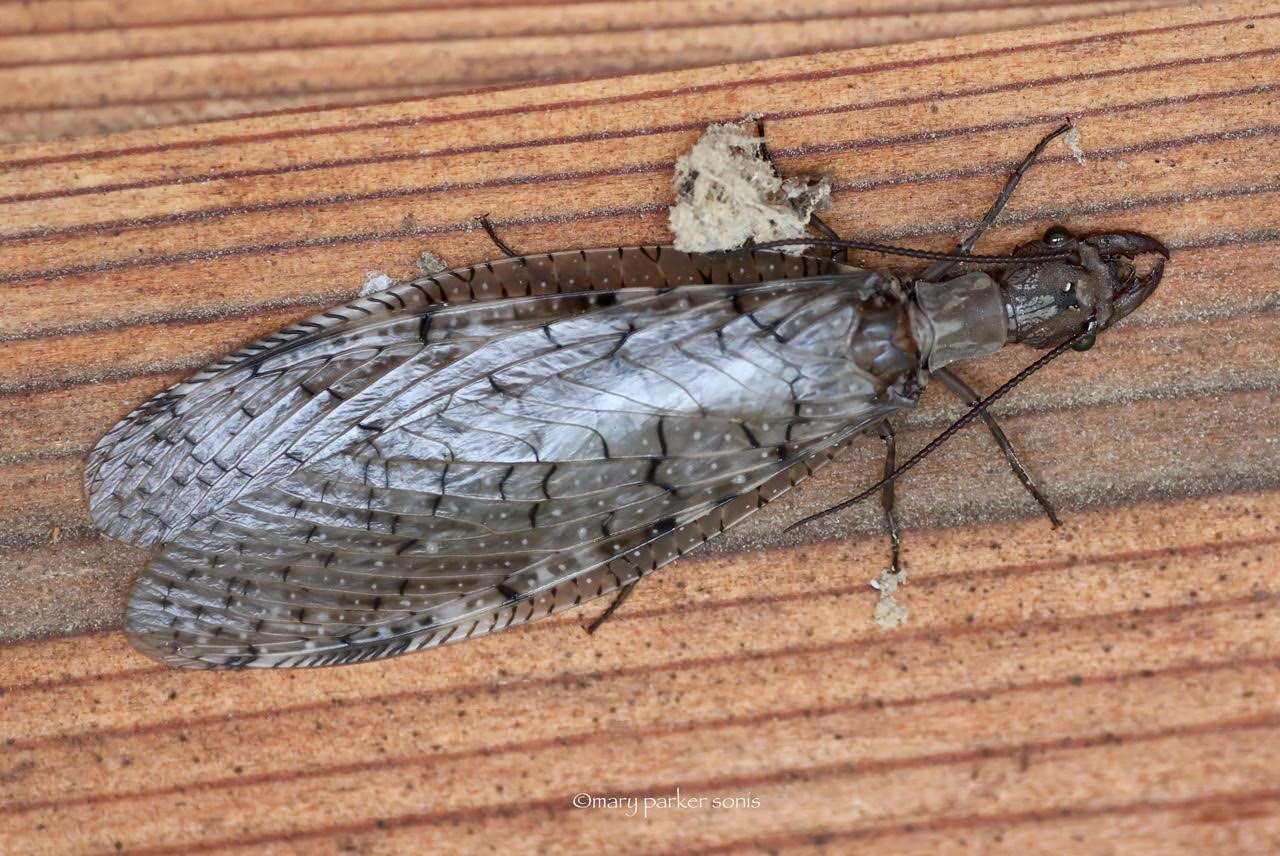
I ever so lightly touched the back of Madame Dobsonfly, and she opened those mandibles wide. As angry mothers will often say, “I ain’t playin’ with you”. Male Dobsonflies possess absurdly long mandibles, but they don’t bite. They believe the long mandibles enable them to wrestle with other males, and impress the ladies.
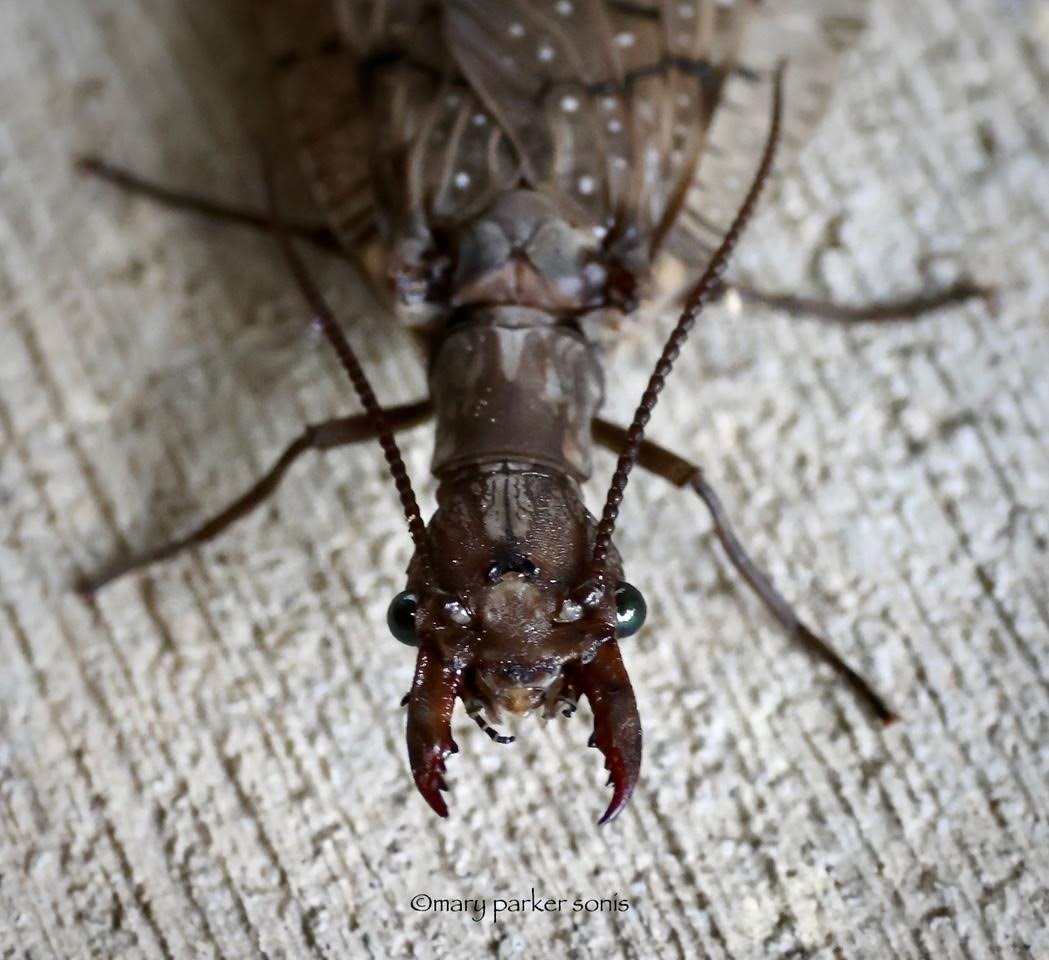
Dobsonfly egg case. For protection from the elements and camouflage, the female covers her eggs (might be a couple of thousand in there) with a chalky substance. It looks like bird poop.

This egg case has hatched out, leaving an indelible chalky outline. Here’s the odd thing. Staff at the NCBG stated that female Dobsonflies like to lay their eggs on the walls of the building. This seems unwise. Morgan Creek is the nearest body of water, and the creek is about 100 yards from this wall. That’s not over water or on some rock near water. It would be a monumental task for the tiny Hellgrammite hatchlings to travel that distance to reach the water they require. No one has been able to solve the mystery, and the Garden staff has consulted with aquatic insect entomologists. Anyone out there have an explanation?
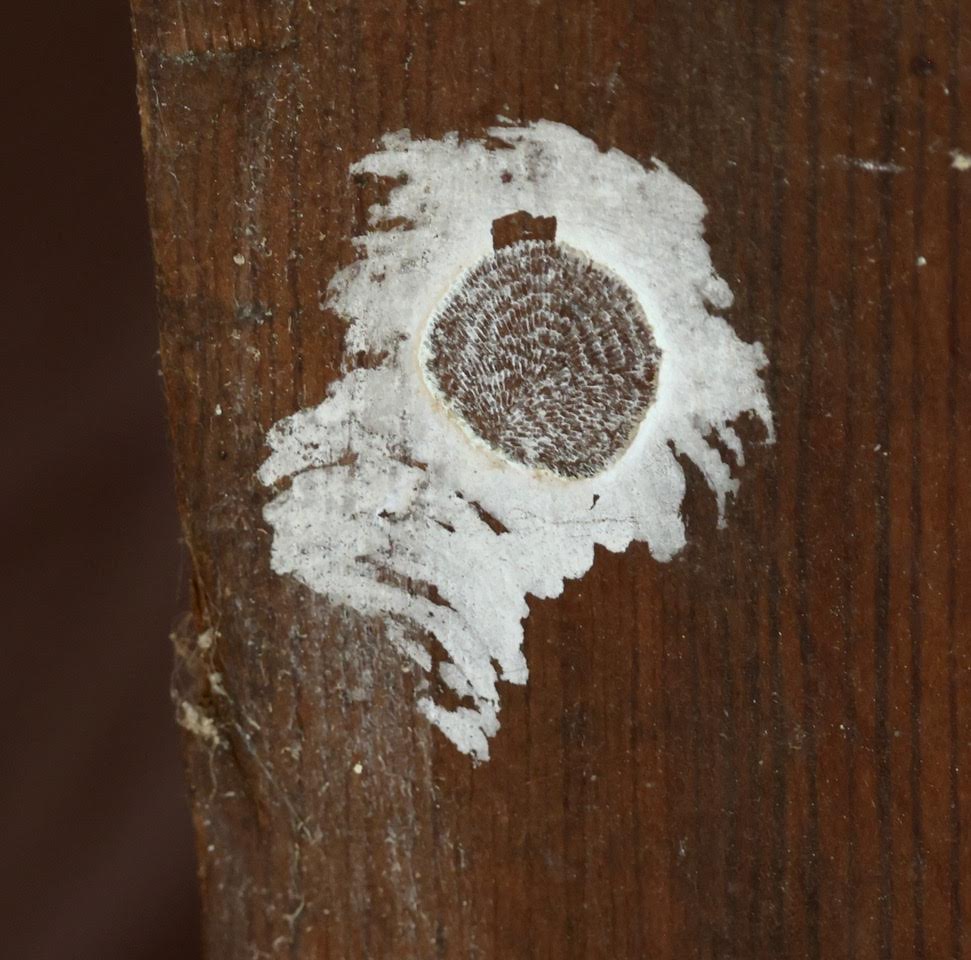
Of course, we have the large Writing spiders setting up shop. This species is Argiope aurantia, or Yellow Garden spider.
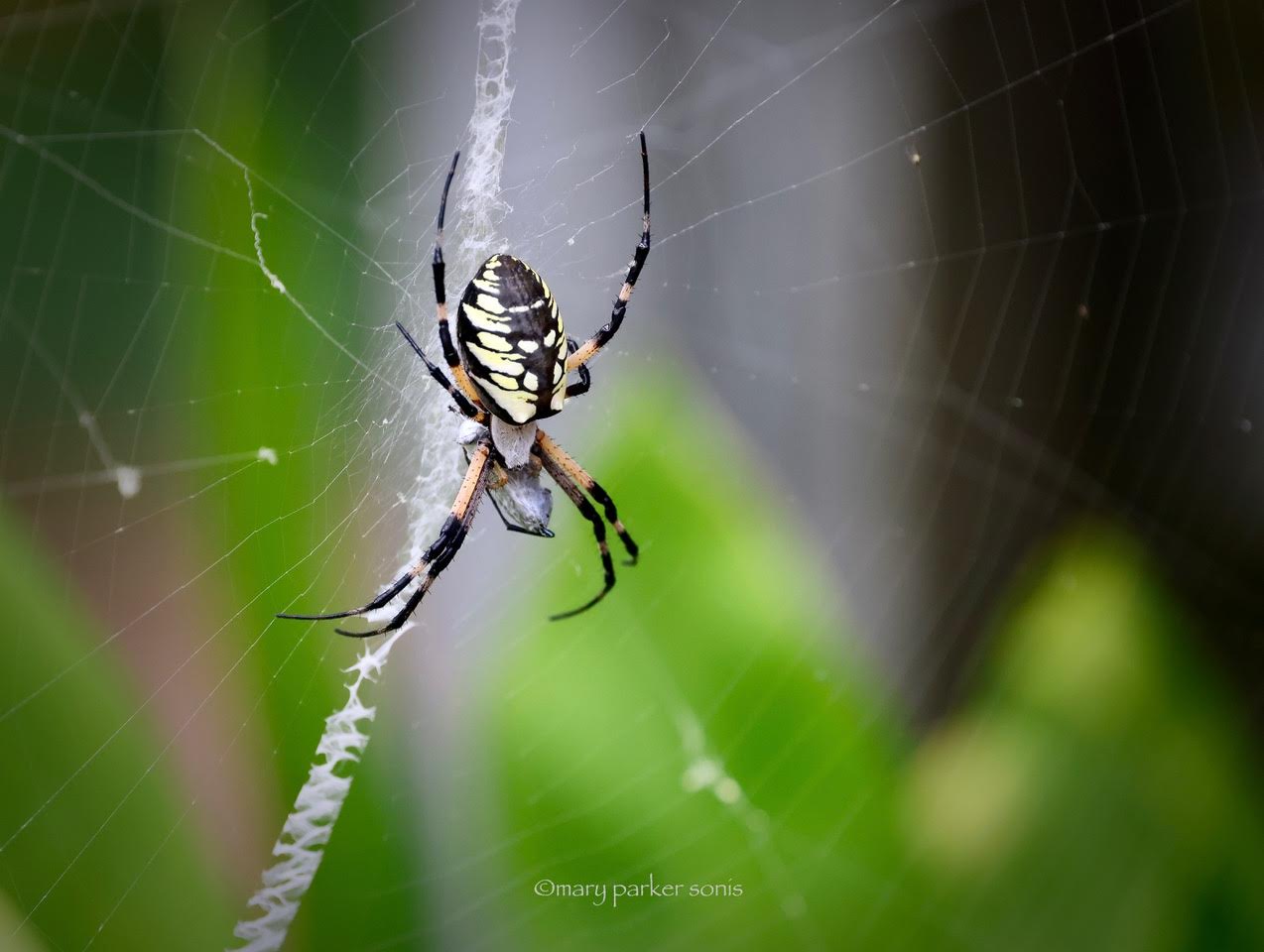
Spicebush Swallowtail
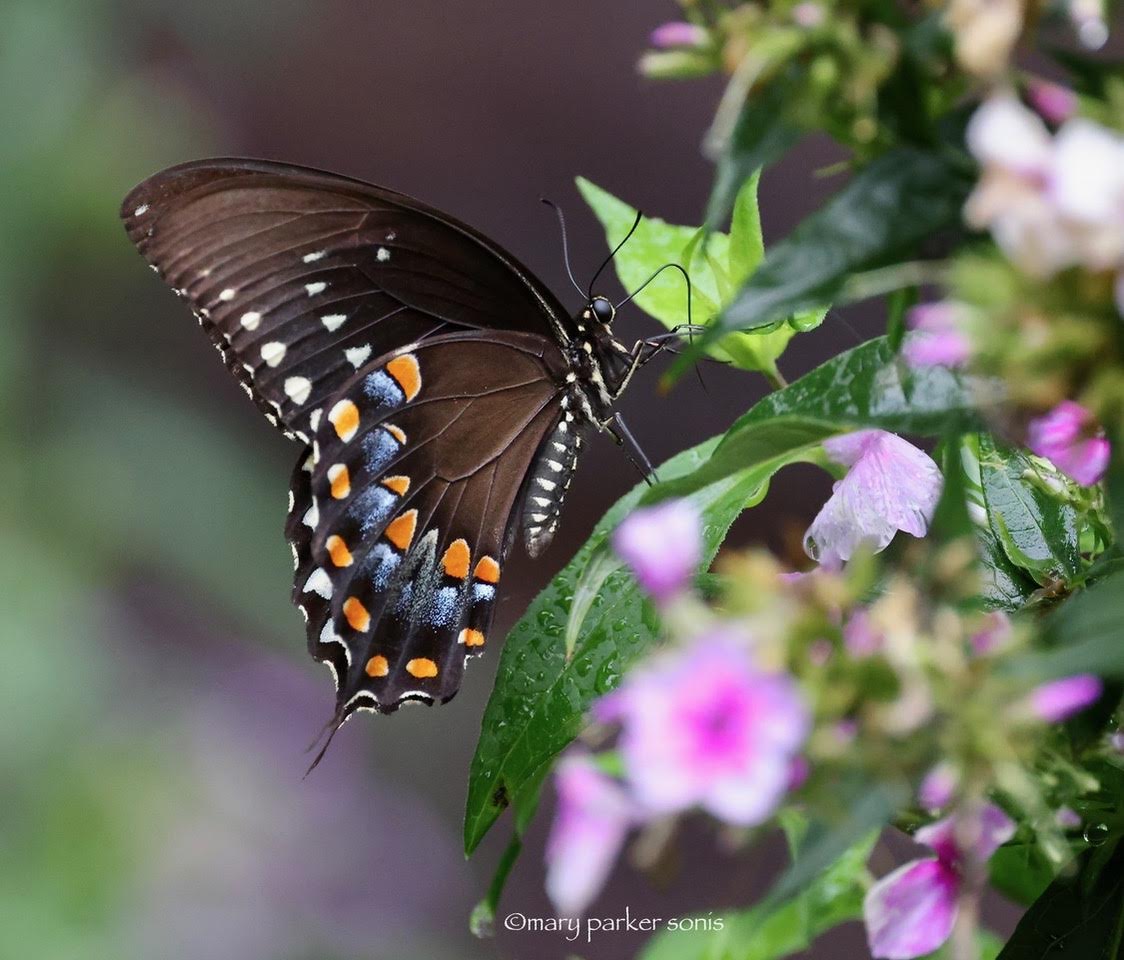
The endless rain and dampness has been great for large snails.
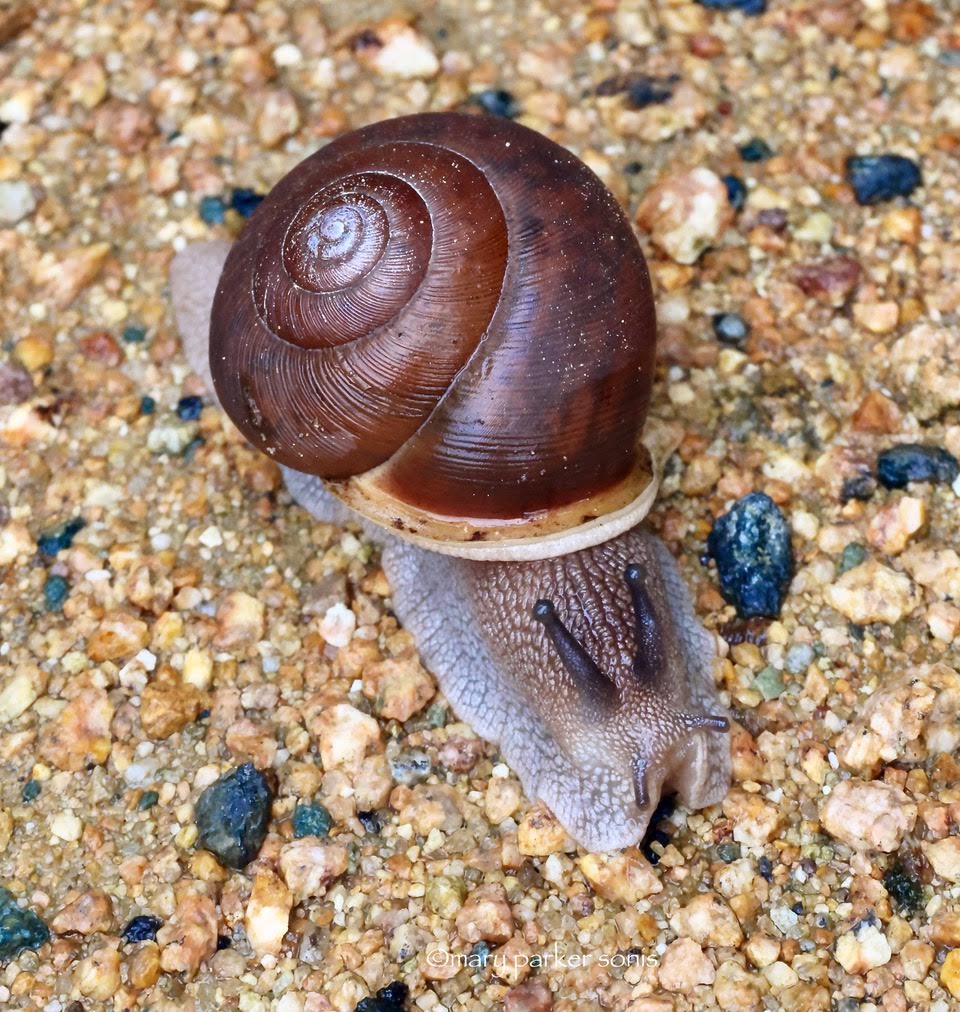
Gary, You’re back!

Carolina Anole on Milkweed leaf.

Prize of the week was seen at Mason Farm. A beautiful Eastern Kingsnake came out towards the road. Before I get all the comments, “Oh Mary, please no more snakes” note that Kingsnakes are immune to snake venom, and are well known to consume Copperheads. Not my business, and every creature has to eat, but if you have a Kingsnake in your garden, be happy that someone is taking charge of the venomous snakes, not eliminating them entirely, but keeping them under control.
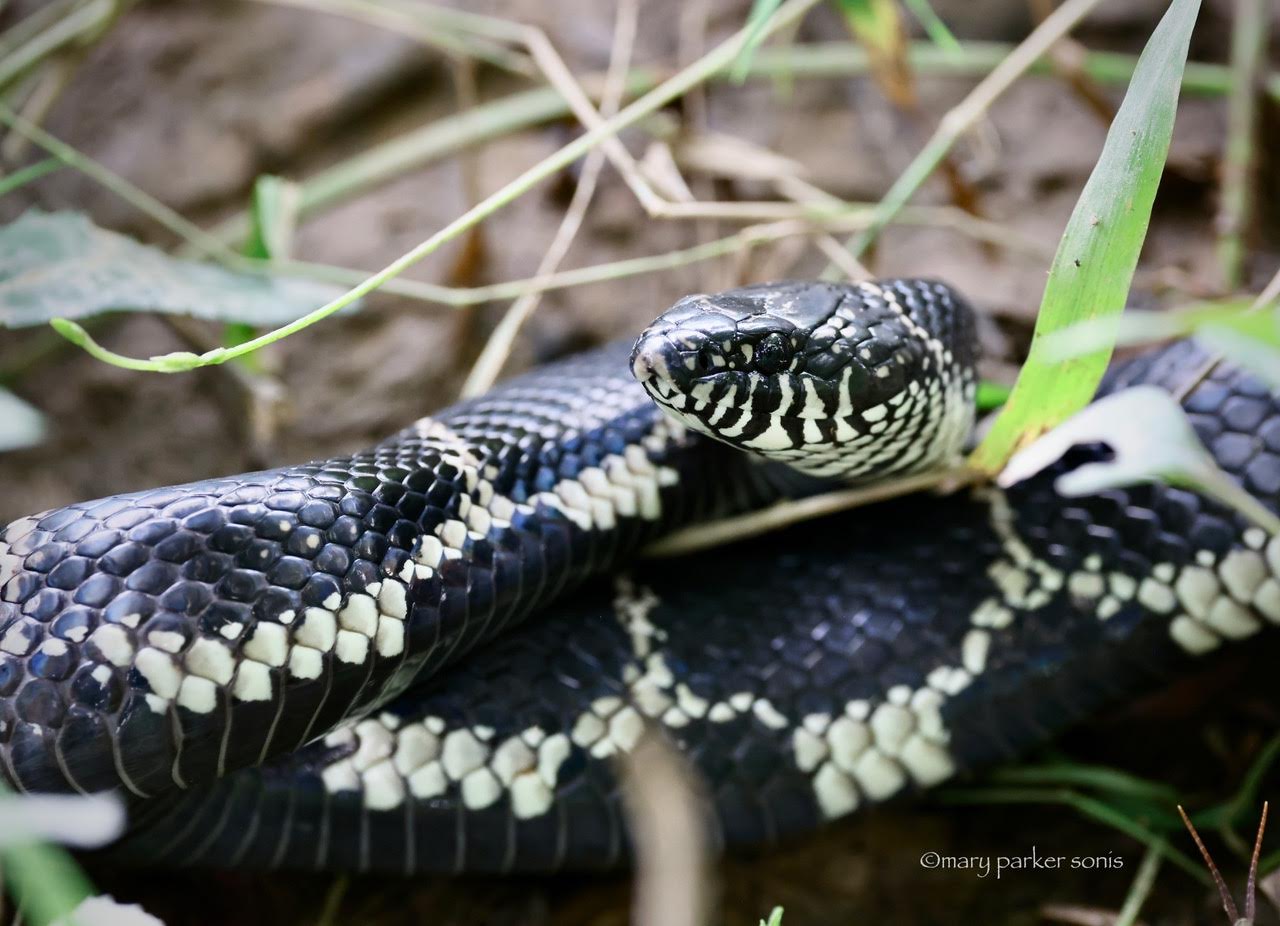
Green Heron hunting on the Mason Farm Road. The flooding has created a decent sized waterway from pond overflow.
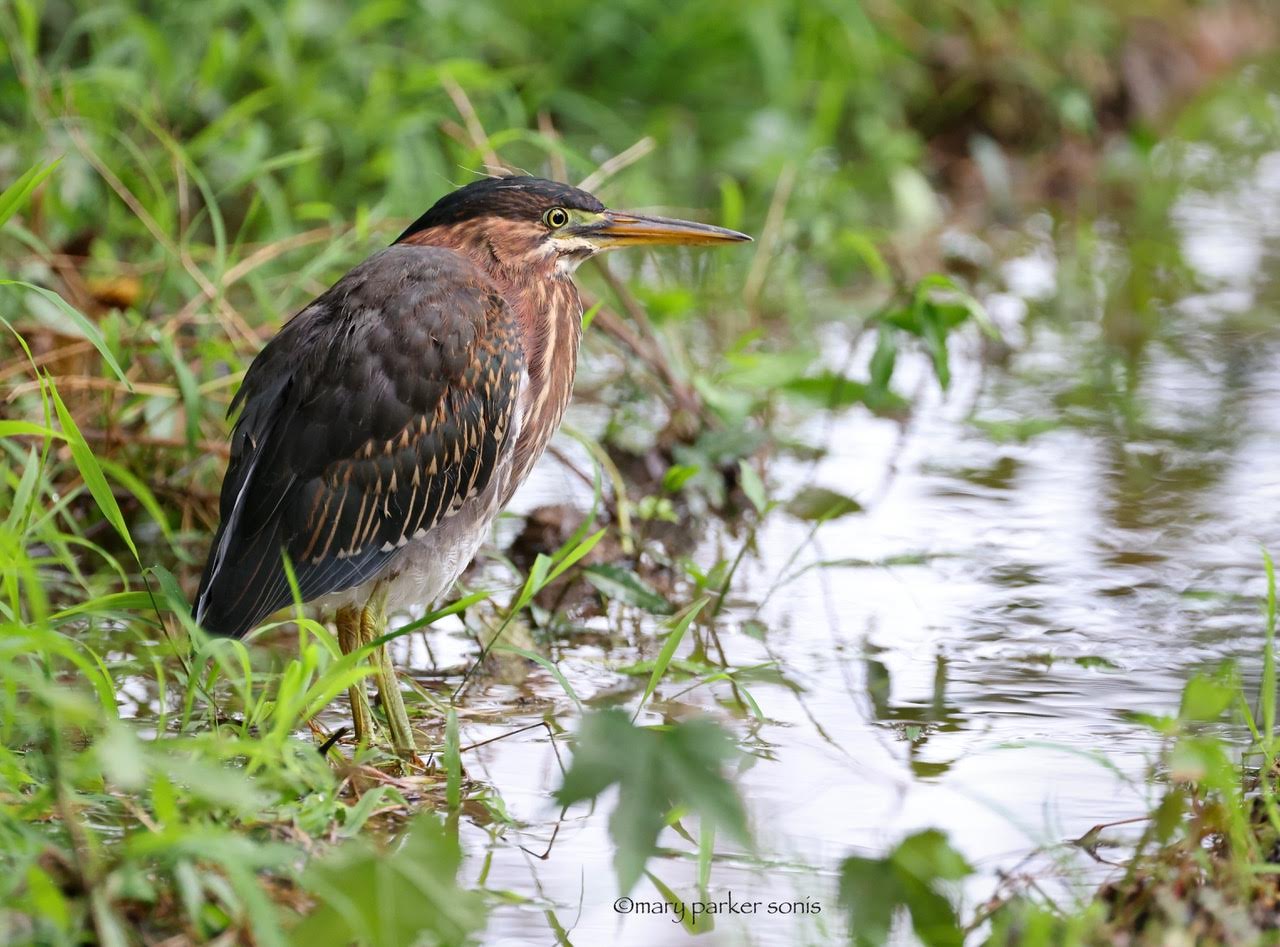
When looking for a subject, I can always count on our local Hooded Warblers. They will migrate south in September.

Now we get to see our summering Hummingbirds with a backdrop of Ironweed. I’ve taken the same photo about a thousand times, but why not one more?

So long from the NCBG and from home base in Carrboro.
Love,
Mary K